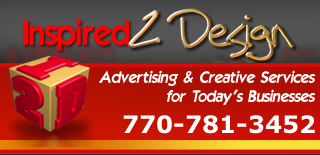Choosing the right designer for a job is super important, and that's why we added it to our blog. But it occurred to me that before you get to the point of hiring or even interviewing companies or freelancers for a web design project, you need do some soul-searching. Knowing what you want before you start talking to designers is critical in choosing the right provider.
Of course, your agency may have some additional advice, but starting out with a plan, setting objectives and expectations is crucial to the success (and the budget) of your design project. Launching a successful website takes planning. Defining some goals and objectives will help avoid pitfalls. Having an understanding of terms, processes and functionality of web design and development will help you choose your design team wisely. Here's our advice: Every company needs a website that represents their business and it should include their logo, marketing message, location, phone number, and products or services. Your goals may be broad enough to want to collect information, sell products, or connect to internal systems. Once you determine what you expect from your website and what functionality you need, you can begin searching for a web designer. The best design professionals are like consultants – they should strive to understand your scope, then propose the appropriate solution.
Step 1: Build a “Wishlist”
Whether you're creating a website from scratch or updating an existing one, the first thing to do is to identify your goals and objectives. It’s not good enough just to have a website; you should expect tangible results from the investment and setting goals will help you measure your results. Here are some common website objectives. Do you want to:
- Provide information? Many businesses need only provide contact information, directions, and hours. This type of static website is the least expensive and is often the goal for restaurants, medical doctors, dentists, vets, local retail stores, pet service providers, and other small businesses.
- Sell your products online? An E-commerce solution is more expensive, but can yield big profits for companies that offer unique products and can ship them.
- Provide customer support or customer service? Many companies have reduced staff just by including FAQs, Email questions, complaints, posting policies, instructions, troubleshooting tips, use and care information and more on their websites. More in-depth solutions include Real-Time chat with a rep.
- Gather data for sales or marketing purposes? Like email messages, newsletters, testing products and services. These features can be added to static and ecommerce websites.
Once you know the goals, you can address more specific questions:
- Do you need a URL (domain) purchased?
- Do you need a hosting service for your website?
- Do you already have a logo, or do you need your designer to create one?
- What do you need to include in your website to meet the goals listed above? (About, Location, Rates, Menu, Services, Products, Customer service, Press Releases, Articles, Sign Up pages, Photo Gallery, Events Calendar, Archives)
- Which of these sections can be grouped together on web pages?
- Does you need interactive features? (database connection, order tracking, sign-in, calculator, or any feature where visitors interact with your site.)
- Do you have a content writer or do you need to have that service provided?
- Do you need to have photos taken or stock photos purchased?
Your website can be as simple or complex as your imagination and budget. Having your “wishlist” will help the designer develop an accurate quote, schedule and resource list.
Step 2: Understanding
Understanding how a website is created is important. If you’re not educated in the basics, you leave yourself vunerable, risking a poor vendor choice, and possibly an end result you didn’t expect.
Website design and development is a two-fold process. It consists of design (front end), what your website looks like. It includes the images and text. Graphic designers concentrate on the front end, choosing appropriate images, fonts, and layout. A good designer has an understanding of what works visually on screen, how a visitor scans a page, and what technical limitations exist for web development. Your designer will rely on you to provide the content – written and visual. Some will help you find a writer and secure photos as well. The second part of the process is web development (back end), what programming is needed to make your site functional. A good web developer will know several programming languages, most importantly HTML (HyperText Markup Language). This code allows browsers to display images and text. Other code terms you may hear are:
- Javascript - used for simple functions of forms, pop ups, and some animation.
- ASP and PHP – are for customization and interactivity (data collection, account information).
- CSS (Cascading Style Sheets) - control the look from a central file.
- Flash – creates interactive menus and tools and animated messages.
Having your plan outlined and armed with some basic information, you can proceed to make a good choice for a design team and expect to have your project delivered without surprises. We'll talk more on this subject in the coming days and weeks - check back with us. Inspired 2 Design, LLC
